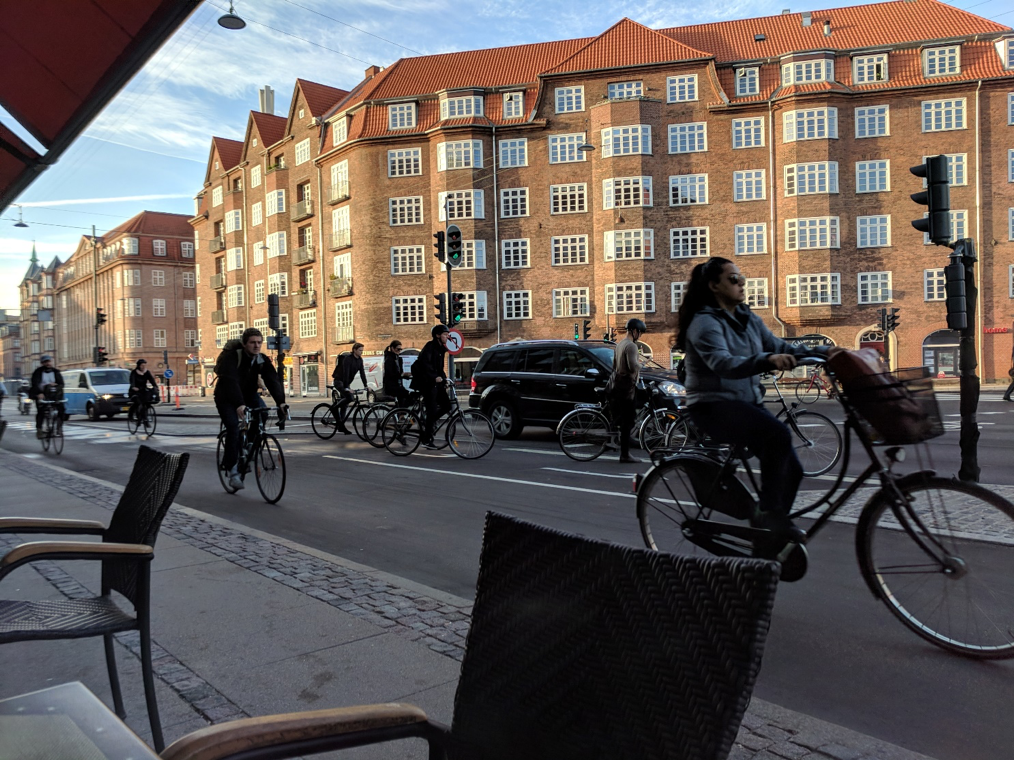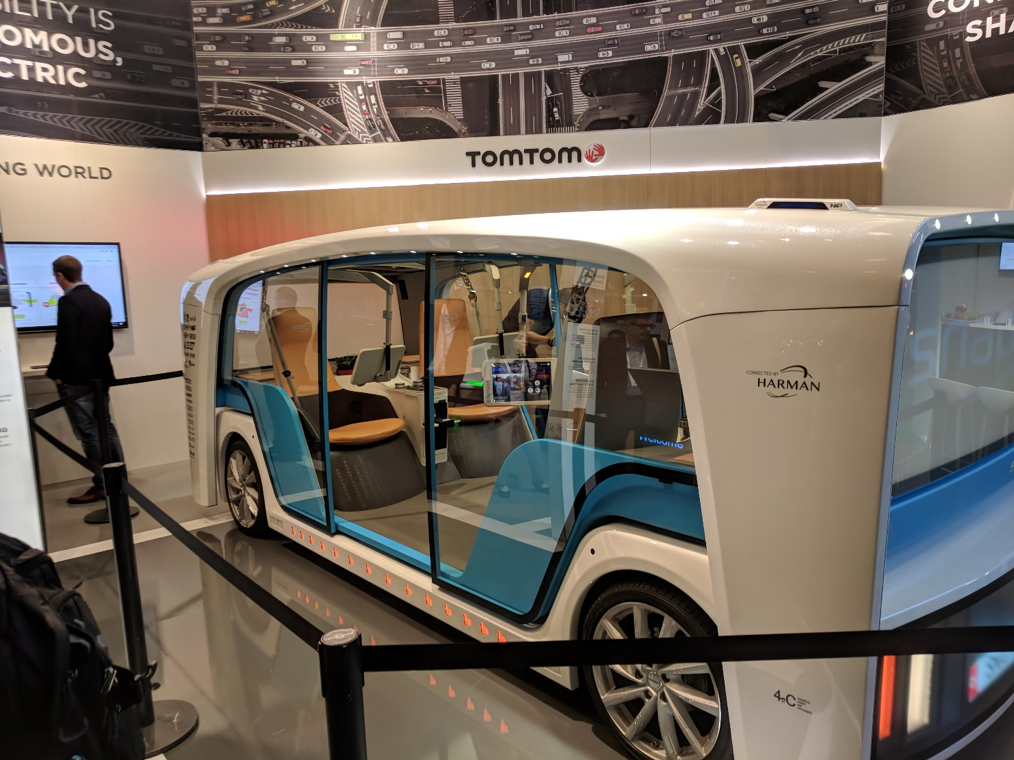I am currently in Copenhagen for the ITS World Congress 2018, working to identify opportunities and risks for our industry in the world of Intelligent Transport Systems. This month’s column is a rundown on what I’ve observed so far, bearing in mind this year’s theme of “Quality of Life”.
Bicycles/E-Bikes
This year there is a major shift away from discussing autonomous vehicles, towards a solution that can be implemented today: cycling. Cycling is promoted as the ideal solution to several problems, including unfit populations and pollution/emissions. Copenhagen itself has embraced this solution; as I walked to the convention centre, I saw more people commuting into the city by bike than by car.
To facilitate this, Copenhagen has been developing three separate but complementary “roadway spaces” for cars, cycles, and pedestrians. The cycleways even have their own traffic lights.

There is also quite a bit of research into connecting cycles, to gain the same benefits that we anticipate for a connected network of cars: everything from intelligent real-time routing, to better data-driven planning of infrastructure.
Considering that most cars on NZ’s roads only have a single occupant, imagine the effect on Auckland’s motorways if even a quarter of commuters opted to cycle.
Becoming Carbon Neutral
Every policy, solution, and technology being discussed has an underlying “green” mobility agenda. It is obvious that reducing carbon emissions is a major part of the agenda, even if not explicitly stated. I suppose climate change has the potential to negatively impact the quality of many lives, so mitigating the impact assures a continued quality of life.
Mobility As A Service (MaaS)
MaaS continues to diversify, with more providers finding their niche, and the number of companies developing automated vehicles continues to grow. At this event, several OEMs and even mapping companies are displaying mock-ups of their future MaaS vehicles.

E-Mobility And Quadricycles
Electric vehicles are the best way to decarbonise transport, but their uptake faces several challenges such as new infrastructure, cost and range concerns. One solution proposed by many OEMs and start-ups is a new form of vehicle called an “L-class” in the EU.
The “L” stands for light, as these vehicles are smaller than cars, ranging from scooters to enclosed tricycles or even quadricycles. Most are designed as single passenger vehicles. This might sound absurd, but considering most vehicles are only carrying a single passenger at any time, this is actually a valid solution for most trips.
Being smaller and lighter, these vehicles have a comparatively higher range and are much cheaper than traditional cars.
New Zealand has not yet recognised these vehicles as a roadworthy option, but I suspect this will change as the rest of the world continues their uptake and enjoys their benefits.
Electrification Of Freight
Commercial freight has become a hot topic; Elon Musk has promised us that the future will be full of self-driving electric trucks. Until that is realised, many nations are looking for other ways to electrify freight. In recent trials, the cheapest was found to be overhead lines over a single lane on motorways. This would work similarly to the electric trains and buses most New Zealanders are familiar with.
Equipping main arterials like this would cater to hybrid vehicles that could use the power to drive as well as charge batteries. While the wires are probably too high above the ground to be of use to cars, it would be ideal for buses as well as other commercial vehicles.
I have been attending many sessions discussing ways the private and public sectors can cooperate to develop solutions. This is very important since technology is evolving faster and faster; policy makers need to both empower new technology and encourage the safe uptake.
ITS Connect
The biggest risk to our industry that I have found is the increased range of vehicles that may be equipped with ITS Connect. ITS Connect is a technology developed in Japan for the Japanese market, transmitting communications to and from vehicles on the frequency of 760 MHz. The risk for us comes from the fact that this frequency in New Zealand has been sold to telecoms, so it is not legal to import goods that can broadcast on it. Previously, this technology was only being sold as a manufacturer option in specific Toyota vehicles in Japan, such as the Lexus RX and the Crown.
Toyota has now announced that this range has been extended, as of September 2018, to include the Lexus LS, RS, and NX, Alphard, Vellfire, Prius, and Prius PHV. It is also now a dealer option in the Noah, Voxy, Esquire, Harrier, C-HR, Camry, and Corolla Sport.
VIA has advised the industry to avoid these vehicles; if necessary, the ITS Connect devices could be disabled or removed. The problem is identifying which vehicles have it, because it is only an option. Passive detection tools are not reliable because the broadcast capability can be turned off by the seller in Japan, leading to false negatives.
VIA will continue to explore options for identifying these vehicles, as well as further opportunities and risks in emerging technology.

